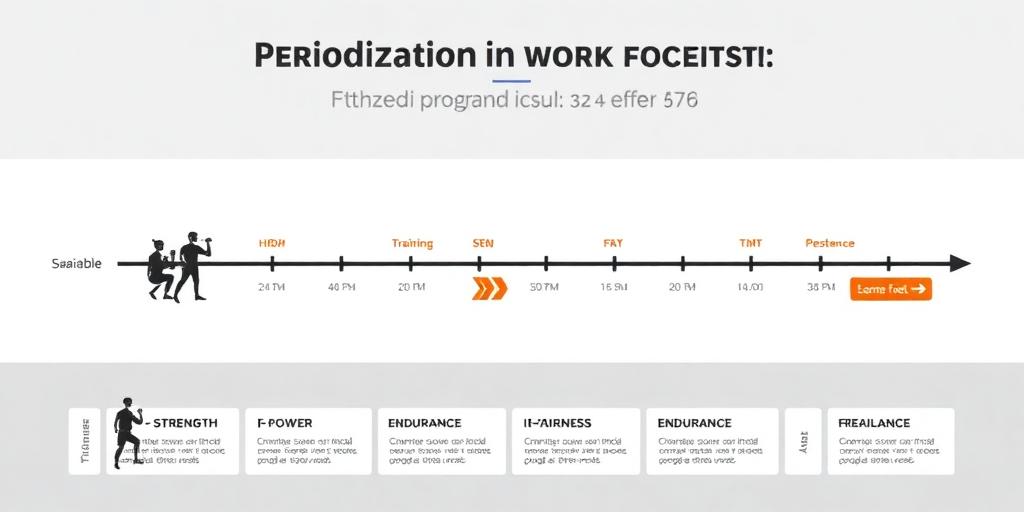Periodization Explained: Advanced Workout Program Design
Periodization is a systematic approach to planning your training to maximize performance and minimize the risk of injury. It involves dividing your training into distinct cycles or phases, each with specific goals and objectives. This method is widely used by athletes and fitness enthusiasts alike to achieve peak performance at the right time.
What is Periodization?
Periodization is the process of varying your training stimulus over time to promote long-term progress. Instead of following the same workout routine week after week, you strategically change variables such as intensity, volume, and exercise selection to challenge your body in new ways. This helps to prevent plateaus, reduce the risk of overtraining, and optimize performance.
Key Principles of Periodization
- Specificity: Training should be relevant to your goals. For example, if you're training for a marathon, your training should focus on endurance and aerobic capacity.
- Overload: To improve, you must progressively increase the demands placed on your body. This can be done by increasing the weight, reps, sets, or decreasing rest time.
- Variation: Varying your training stimulus helps to prevent accommodation and promote continued progress. This can be done by changing exercises, intensity, or volume.
- Progression: Training should gradually increase in difficulty over time. This ensures that you continue to challenge your body and make progress.
- Recovery: Adequate rest and recovery are essential for adaptation and preventing overtraining. This includes getting enough sleep, eating a balanced diet, and incorporating rest days into your training schedule.
Phases of Periodization
Periodization typically involves dividing your training into several distinct phases, each with specific goals and objectives. Here are the most common phases:
- Preparation Phase (Base Training): This phase focuses on building a foundation of strength, endurance, and general fitness. Training volume is typically high, and intensity is low to moderate.
- Strength Phase: The strength phase focuses on increasing maximal strength. Training volume is moderate, and intensity is high.
- Power Phase: The power phase focuses on developing explosive power. Training volume is low, and intensity is very high.
- Competition Phase (Peaking): This phase focuses on peaking for a specific competition or event. Training volume is low, and intensity is very high. The goal is to optimize performance and minimize fatigue.
- Active Recovery Phase: This phase focuses on recovery and regeneration. Training volume and intensity are very low. The goal is to allow your body to recover and prepare for the next training cycle.
Types of Periodization
There are several different types of periodization, each with its own advantages and disadvantages. Here are some of the most common types:
- Linear Periodization: This is the most traditional type of periodization, where training volume gradually decreases while intensity gradually increases over time.
- Undulating Periodization: This type of periodization involves varying training volume and intensity on a more frequent basis, such as weekly or even daily.
- Block Periodization: This type of periodization involves dividing your training into distinct blocks, each with a specific focus. For example, one block might focus on strength, while another focuses on power.
Benefits of Periodization
- Maximized Performance: By systematically varying your training stimulus, periodization helps to optimize performance and prevent plateaus.
- Reduced Risk of Overtraining: By incorporating rest and recovery phases into your training plan, periodization helps to reduce the risk of overtraining and injury.
- Improved Motivation: By providing variety and structure to your training, periodization can help to improve motivation and adherence.
- Better Results: By optimizing your training plan, periodization can help you achieve better results in the long run.
How to Implement Periodization
Implementing periodization involves careful planning and attention to detail. Here are some tips to help you get started:
- Define Your Goals: What are you trying to achieve? Are you training for a specific competition or event, or are you simply trying to improve your overall fitness?
- Assess Your Current Fitness Level: What is your current level of strength, endurance, and flexibility? This will help you determine where to start your training plan.
- Choose a Periodization Model: Which type of periodization is best suited to your goals and fitness level? Linear, undulating, or block periodization?
- Plan Your Training Cycles: Divide your training into distinct cycles or phases, each with specific goals and objectives. Be sure to include rest and recovery phases.
- Monitor Your Progress: Track your progress and make adjustments to your training plan as needed. Pay attention to how your body is responding to the training stimulus, and make changes if you're not seeing the results you want.
Conclusion
Periodization is a powerful tool that can help you maximize performance, reduce the risk of injury, and achieve your fitness goals. By systematically varying your training stimulus over time, you can continue to challenge your body and make progress. Whether you're a competitive athlete or a fitness enthusiast, periodization can help you take your training to the next level.









